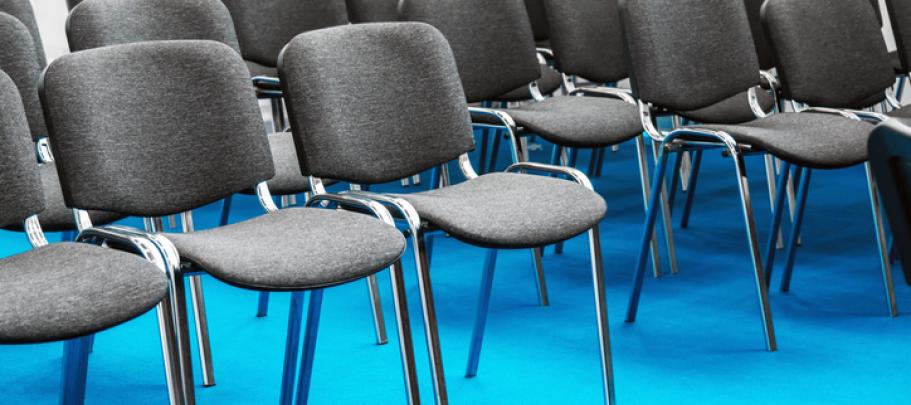
Meetings have been on my mind this week. I recently attended a large meeting (which I didn’t organize) that wasn’t entirely successful. The first problem that I noticed as soon as I entered the room was the way tables and chairs were arranged. It was a big space and meeting organizers had used all of it, stretching the tables to fill the entire room. As a result, people at one end of the room were very far apart from those at the other end. This created distance—both physical and psychological.
So when a client and I met about her upcoming town hall meeting, I began by talking about room arrangement. At first my client dismissed the topic; “Isn’t that simply logistical?” But I persisted with my point that room arrangement is actually an extremely effective method for letting participants know that this meeting is going to be . . . well, awesome.
The reaction you want is: “Wow, this is different,” as participants enter the room. It’s their first signal that this meeting is going to be more dynamic, interactive and interesting than the usual yawn fest.
Here are five easy ways to break out of the stiff, regimented approach to meeting space:
- No rows, please. Straight lines of chairs are not only uncomfortable; they’re also stultifying. And classroom style (which provides a table in front of straight rows) is just as bad. Instead, choose round tables or, if you’ve only got rectangular ones to work with, angle them to mash up the feng shui.
- Go big—or get small. Comedy club owners know that people laugh louder when they’re close to the front and packed tightly together. And fitness trainers know that you need a lot of room to build up a sweat. So give yourself the right amount of room for what you want to accomplish: Small space to create a sense of closeness, a big space to let participants stretch out and get active.
- “Where’s my seat?” People are creatures of habit. So they’ll always sit close to the door or with their work buddies by the window or as far back as they can possibly go. Shake it up by assigning seats based on your objectives for creating interaction. Mix up work groups, for example. Or bring shy people together with more confident colleagues.
- Abolish grey, beige and bland. Bright colors create energy. Add neon tablecloths (even the cheap party-store variety). Or balloons. Or tent cards in primary shades. Any pop of color will do.
- “Touch this.” Most meetings offer nothing but flat, smooth surfaces: The table, a screen and the four walls. (Yawn!) That’s why the best way to engage participants is to give them something to do with their hands. Mold clay. Build a structure out of blocks. Draw. Even seemingly aimless doodling actually focuses the mind. So break out the crayons, markers and glue sticks!





